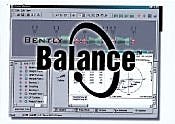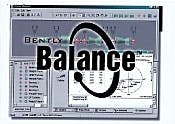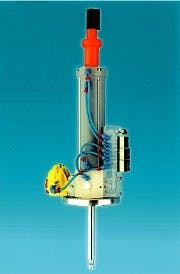Machinery-balancing software program
Newly developed Balance software incorporates a graphical user interface that allows the user to simply "drag and drop" weight changes to a machine and perform "what if" balancing calculations ranging from simple to complex. The software imports ADRE for Windows data bases. Other features include the ability to calculate, use, and manage multiple influence vectors; the ability to manually enter data; and the ability to handle as many as 16 XY measurement planes (32 channels) and as many as 12 correction planes.
This new program handles complex balancing situations, such as compound rotors dealing with multiple speeds or ranges of speeds under different load conditions. The software is designed for Microsoft Windows 9X and Windows NT operating systems.
Source: Bently Nevada Corp., 1631 Bently Parkway South, Minden, NV 89423.
Seismic imaging; acquisition, processing systems
New Q-Marine seismic technology promises precise reservoir characterization and evaluation.
The firm says it brings seismic operations closer to the goal of delivering reservoir images at a resolution similar to that of downhole measurements.
The towed streamer seismic data acquisition system combines features of streamer steering technology with single-sensor recording. Exploiting advances in electronics and data communication networks, the system allows recording by more than 4,000 individual hydrophones on each of as many as 20 streamers, giving a maximum of 80,000 channels. Signal processing software enables real-time digital group forming of the single-sensor data and correction of perturbations in the seismic data. The real-time intelligent dynamic group forming incorporates high-fidelity data-adaptive noise attenuation.
Also introduced is Q-Borehole, the newest component of this firm's Q seismic acquisition and processing system.
Q-Borehole acquisition technology uses a field-configurable downhole tool with up to 20 multicomponent sensor shuttles that provide real-time data at varying sample rates.
The downhole tool provides signal fidelity on all recording components through the use of a small sensor package that is decoupled from the main tool body, further reducing noise. Advanced software helps ensure interactivity during acquisition, then provides automated quality control and processing that deliver data in time to aid drilling decisions.
Source: Schlumberger Oilfield Services, 225 Schlumberger Drive, Sugar Land, TX 77479-3136.
Retractable pH measurement system
The CPA 463 retractable electrode holder helps ensure maximum pH or ORP sensor life, reduced maintenance, and safe, reliable measurement in petrochemical plants.
The CPA 463 features o-ring sealing technology and a patented internal ball valve that prevents medium carry-over, allowing isolation of the electrode for cleaning, calibration, or replacement under process conditions. The system can be operated either manually or pneumatically. Integral pressure sensors provide position feedback allowing integration into automated process sequences. Assembly limit positions and compressed air supply monitoring further increase process safety.
When paired with the Autoclean automatic cleaning system, electrode life and measurement reliability are increased, while lowering maintenance and overhead costs, the company points out. Accuracy is improved by reducing effects from coatings and fouling, the firm notes. A sensor check system monitors electrode status and automatically triggers retraction and sensor cleaning as needed.
The 463 is available in two immersion lengths (3.6 or 7.5 in.) and PVC, PEEK, PVDF (Kynar), stainless steel, or Hastelloy constructions depending upon process requirements.
Source: Endress + Hauser, 2350 Endress Pl., Greenwood, IN 46143.
Seafloor seismic acquisition system
A new seafloor seismic acquisition system consists of components that promise to be effective in water depths of 2-2,000+ m.
The FOURcE system is also effective in shallow water areas where towed streamer surveys are uneconomic or geophysically inappropriate, the company says.
The system relies on the Syntrak 960-24 recording system. Good vector fidelity, less ambient noise, improved spatial sampling, and better seismic imaging are ensured by the system's inline sensor package and 25 m sensor spacing, the company notes. The system's armored cable and deepwater hydrophone help extend the acquisition method to water depths of 2,000+ m. In addition, the system's point detector is suited for 3D recording.
Source: PGS Reservoir Services, 7398 Highway 6 South, Suite 1000, Houston, TX 77079.




